Qlite Rev.A 7135*8 Multiple Modes Circuit Board 3.04A
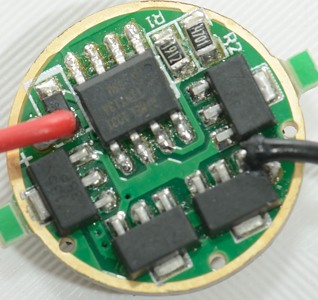
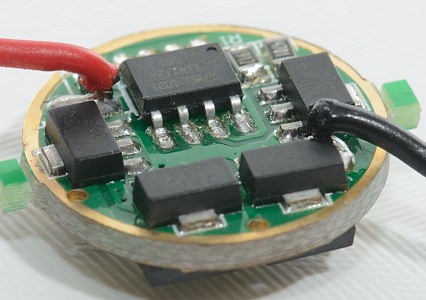
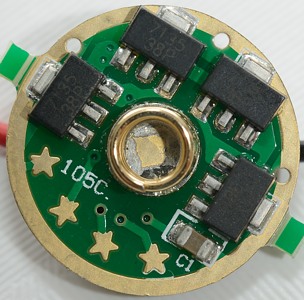
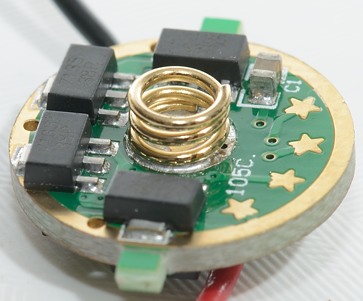
Driver is from Intl-outdoor.com
Official specifications:
- Input voltage: 2.8V - 4.5V
- Current: 3.04A
- Constant current
- PCB diameter: 17mm
- PCB thickness: 1.6mm
- Components height: 4.7mm
- Memory function (sets in after 2 seconds)
- No high pitch noises
- No visible flicker on any mode
- Reverse polarity protection
- Gold plated spring
- Gold plated contacts
- Copper leads with tinned ends already soldered
- Low voltage protection: At 2.9-3V the light will switch to an emergency low mode. At 2.8V the light will flash 9 times to announce imminent cut-off.
- Strobe mode is 10Hz
- Beacon cycle is 2Hz blink for 1 second, 4 seconds light off
Group of modes:
1st Star : 2% - 25% - 100% (Default)
2nd Star : 5% - 30% - 100% - Strobe - Beacon
3rd Star : 15% - 100%
4th Star : 5mA - 2% - 25% - 100%
Group selection is done with solder bridges, 1st star has a bridge on the circuit board and never need a solder bridge.
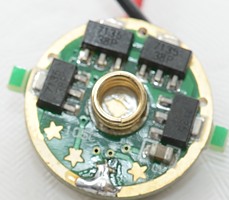
This driver exist in many versions, with the same hardware and different program in the processor (Atmel Tiny13A). These programs control the pwm frequency, the modes and the function of the stars. For the stars only 2, 3 and 4 are used, the first is only part of the design and is not really used. It also means that it is never necessary to add a solder blob or cut the trace connecting it to the ring.
The driver can also have more or less 7135 chips, this defines the (maximum) led current.
Measurements
Tested with: Cree XM-L2 led.
Diameter 17mm
Max. height: 4.7m
Modes no star: low, medium, high
Modes 2st star: low, medium, high, strobe, beacon
Modes 3st star: low, high
Modes 4st star: moonlight, low, medium, high
The mode set selection is done with solder bridges on the driver.
The driver has memory, the actual mode is stored when the light is off for a short time.
A short off/on will select next mode. The light must be off a few seconds to not select next mode when turned on.
Driver is a linear regulator.
Strobe 8.9 Hz, duty cycle 40%
Beacon, pulse width 34ms, repetition rate 4.8 sec
Pwm is 16.5 kHz
The driver flashes a number of times when the voltage is down to 2.80 volt, then it turns the led off.
The four modes banks had the same high mode, but medium and low varies between them.
As usual pulsing current (i.e. pwm) makes it difficult to calculate power and efficiency. In any modes except high I am calculating with a fixed led voltage, but due to the high pwm frequency it is not very precise.
Due to the high pwm frequency the power and efficiency calculations has large errors in the lower modes
High 1st star
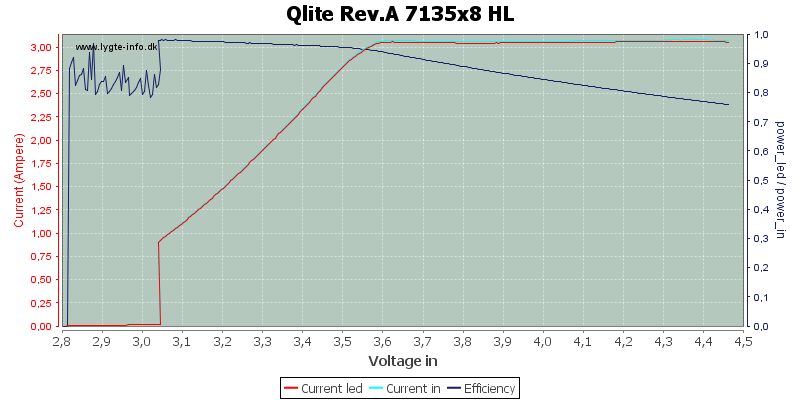
High mode works exactly as expected from a linear driver, efficiency goes up, when voltage goes down, until the driver goes out of regulation at 3.6 volt.
At 3.05 volt the driver reduces the led brightness and just above 2.8 volt the led is turned off.
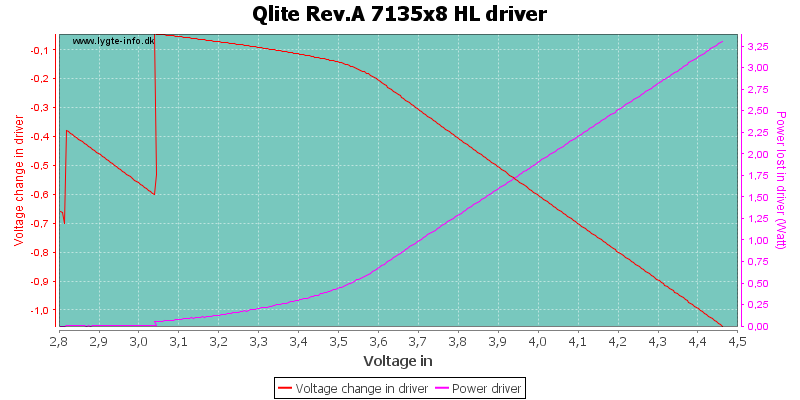
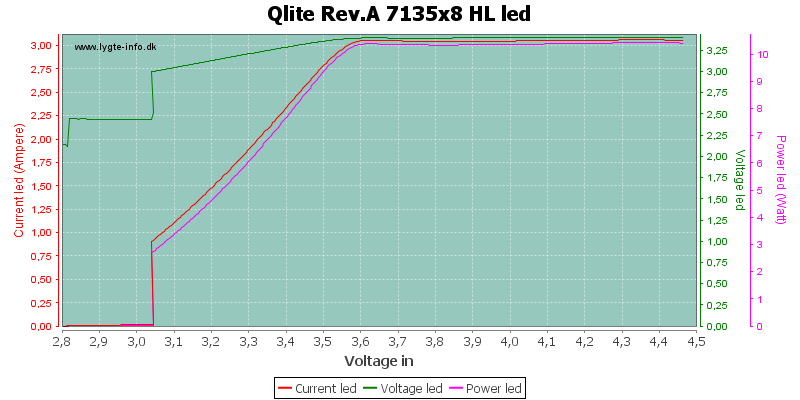
The green curve shows the average voltage across the led, below 3.05 volt it is reduced by the pwm.
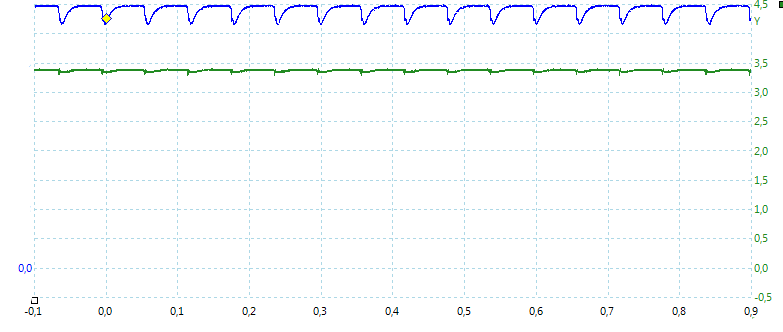
The driver does not disable pwm at high.
Medium 1st star
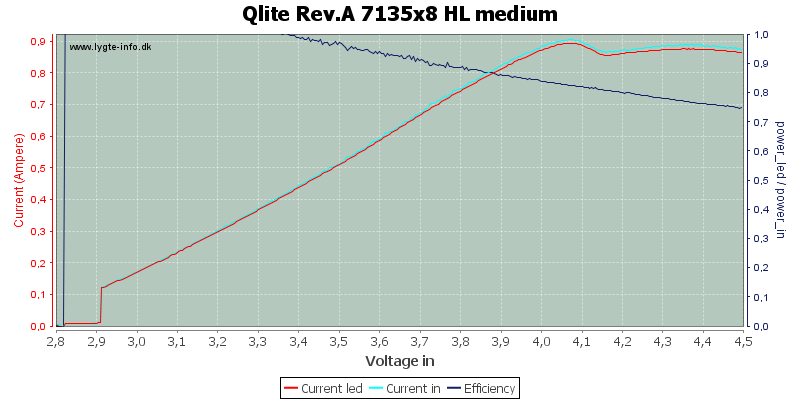
Due to the fast pwm, the driver does not turn fully on. This makes the driver drop out of regulation at a fairly high voltage.
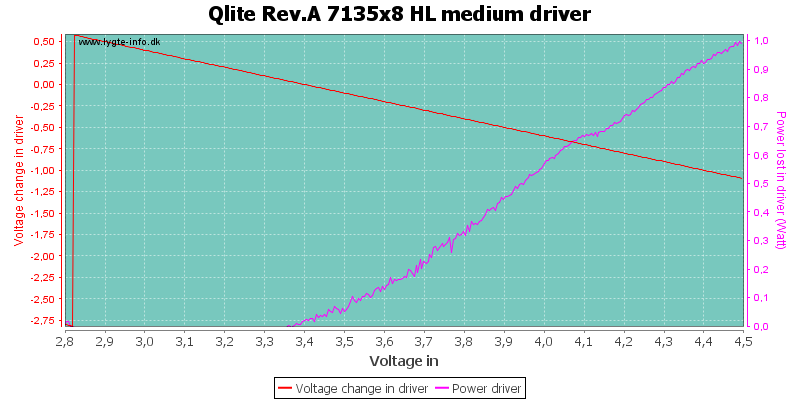
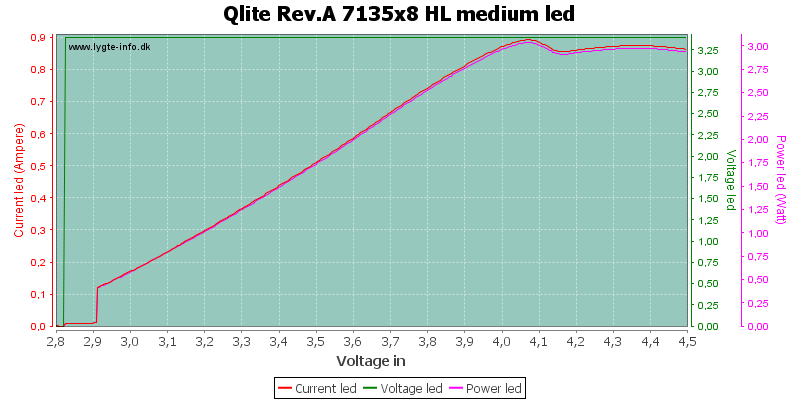
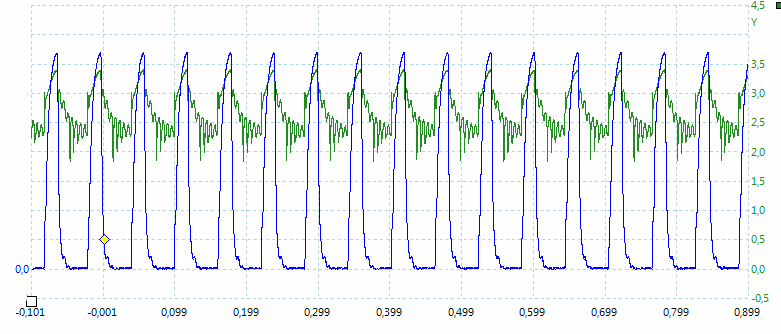
Due to the high pwm frequency, the curve it not square, but rounded.
Low 1st star
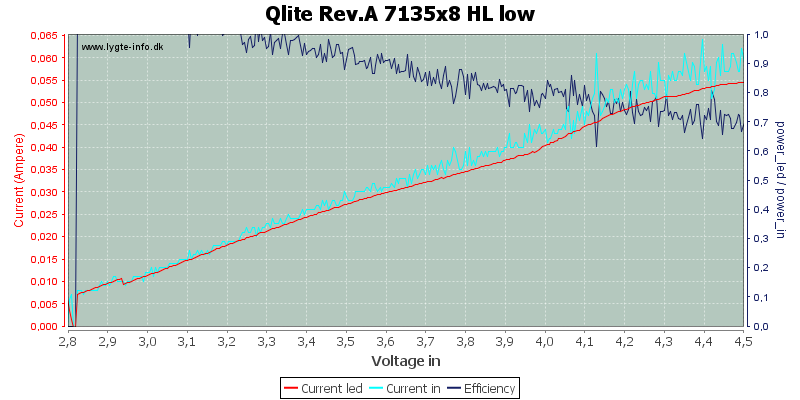
In low mode the light is never in regulation.

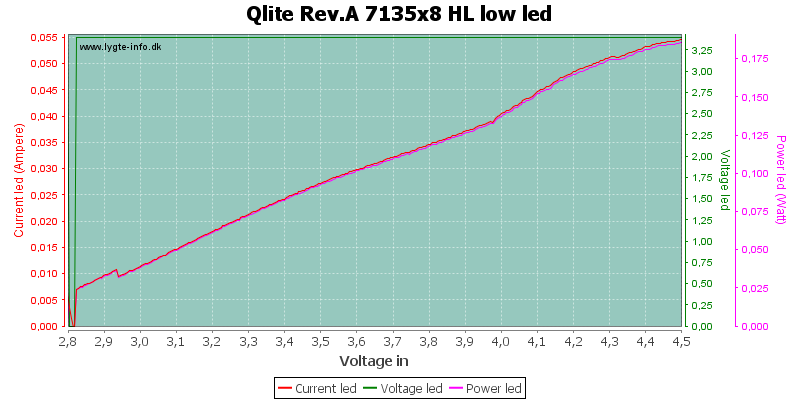
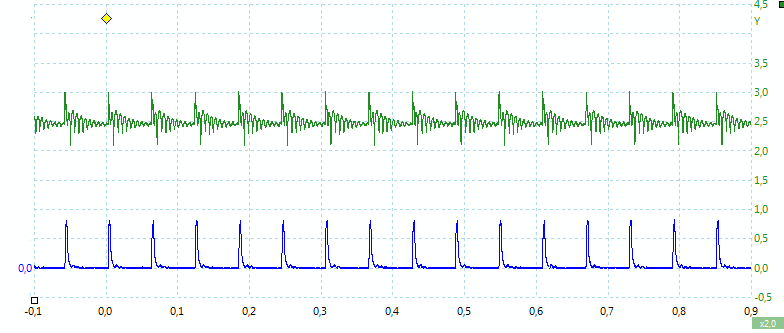
In low the pwm does not even turn fully on.
High 2st star
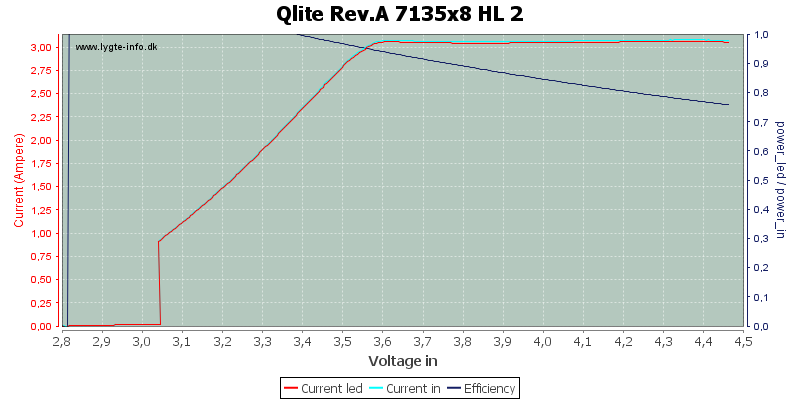
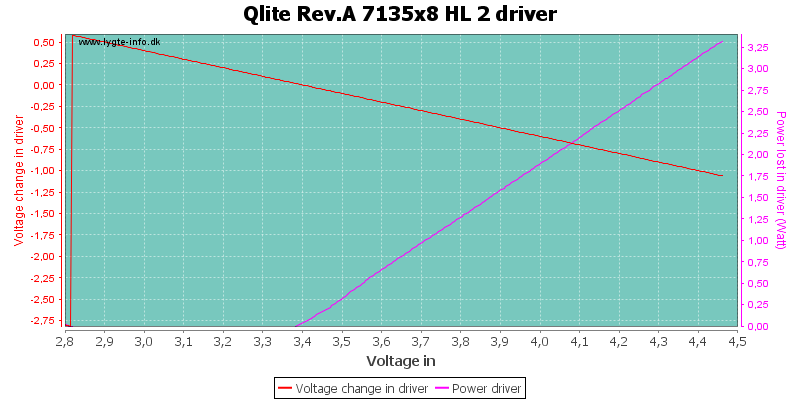
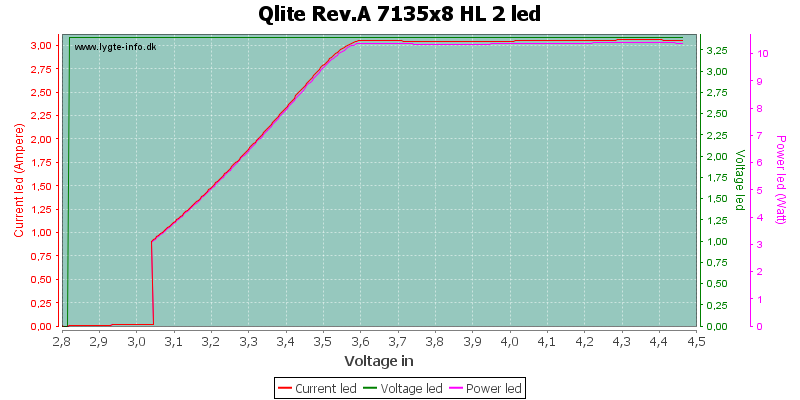
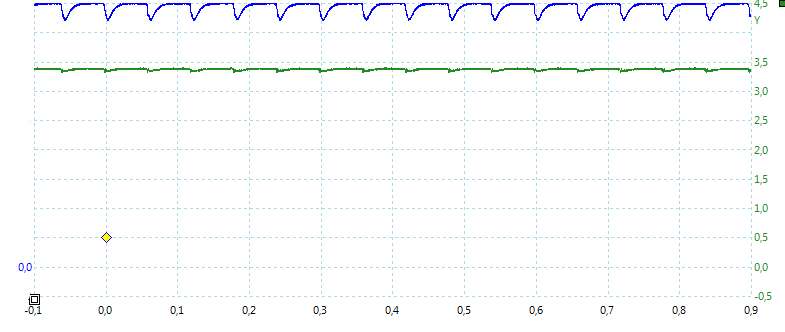
Medium 2st star
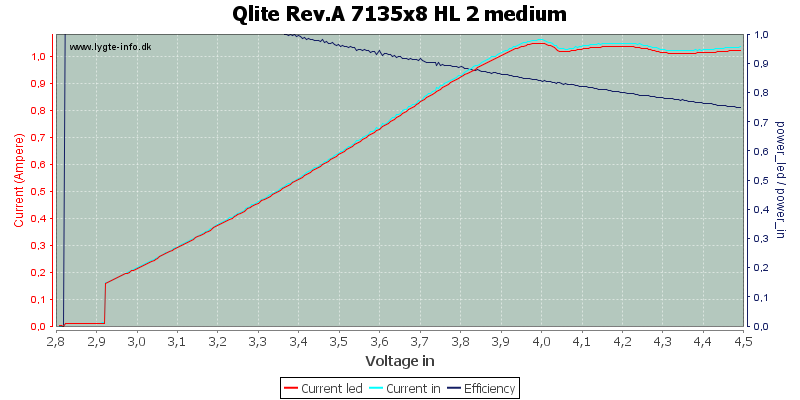
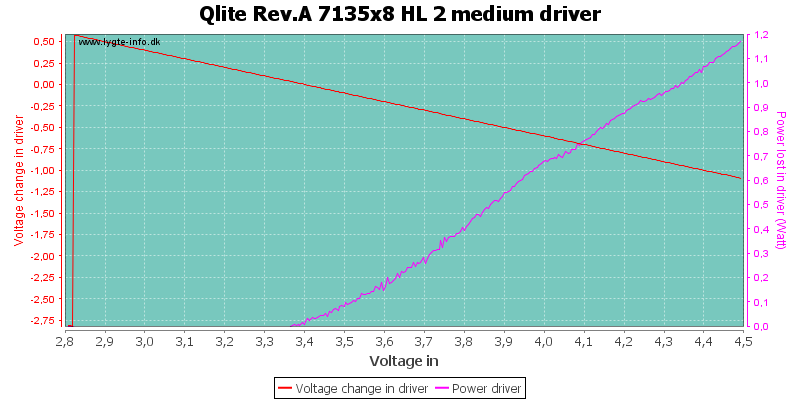
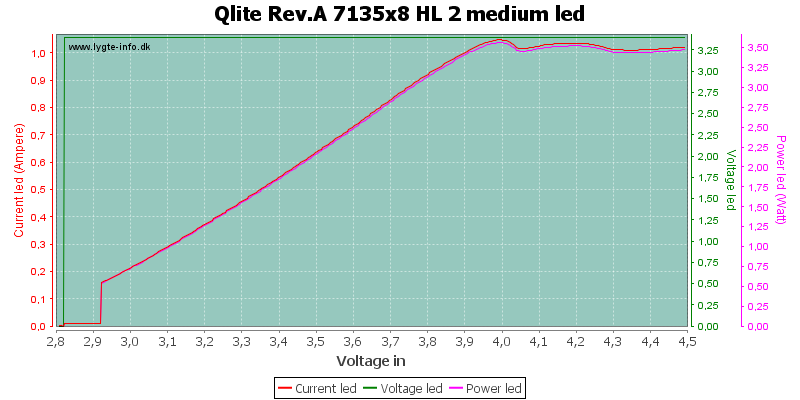

Low 2st star

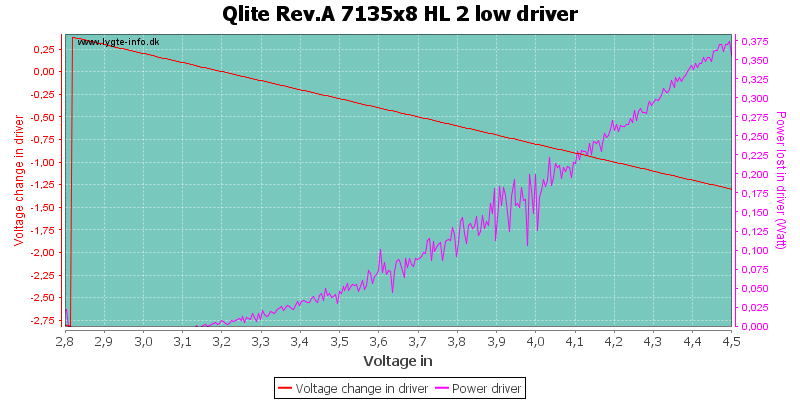
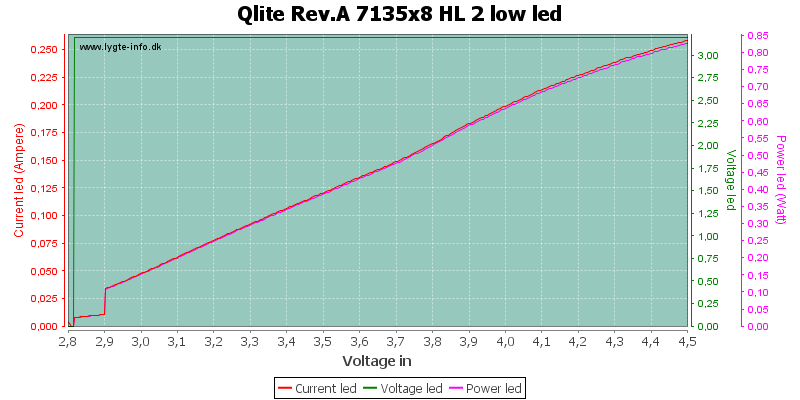
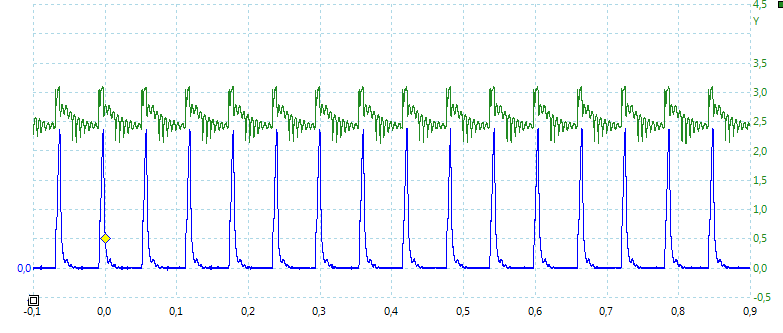
Strobe 2st star

Strobe is 8.9 Hz with 40% duty cycle.
Beacon 2st star
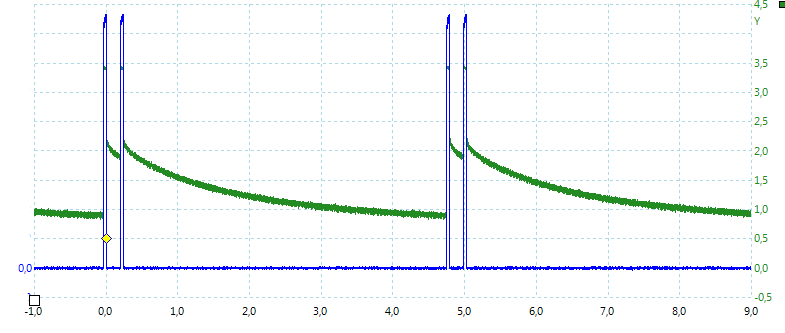
Beacon uses puls width 34ms with dual flashes and a repetition rate of 4.8 sec.
High 3st star
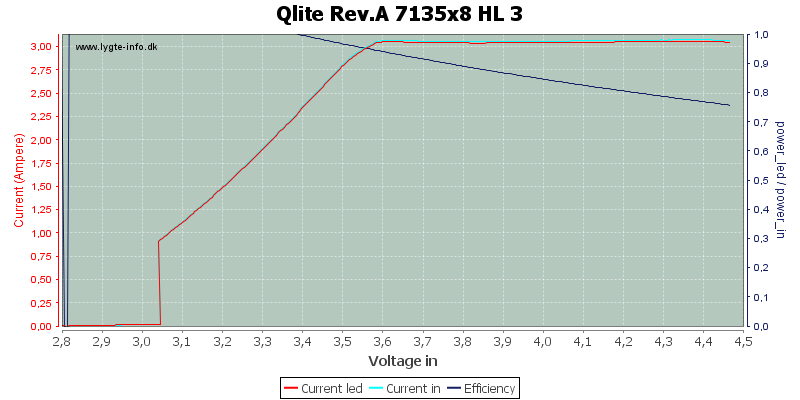
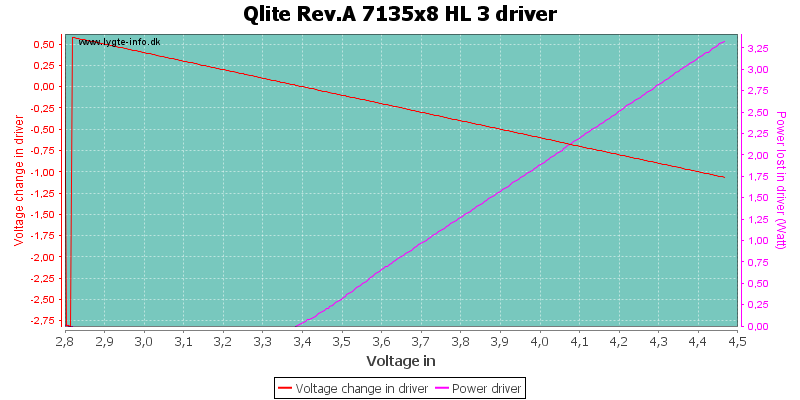
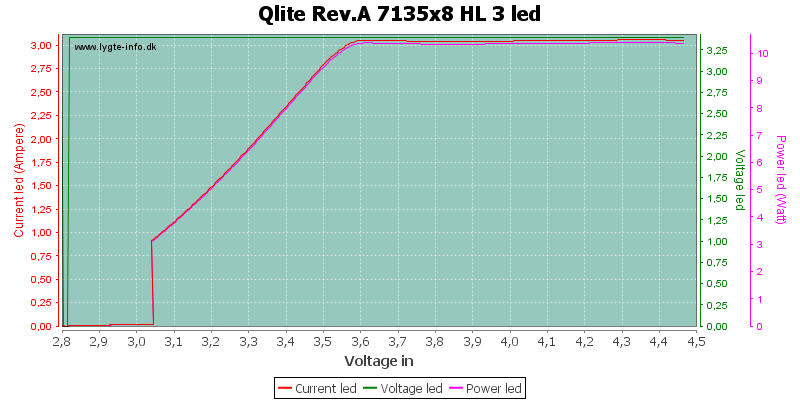
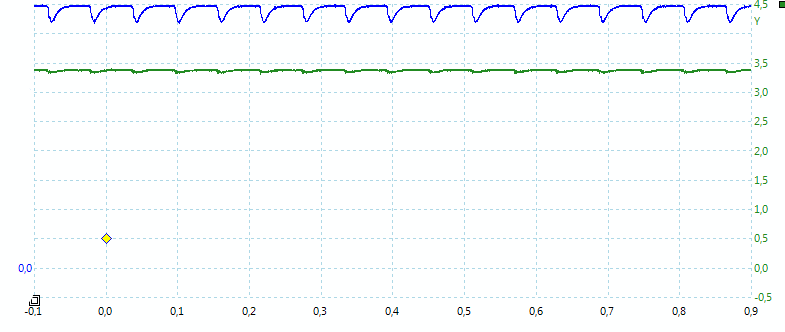
Low 3st star
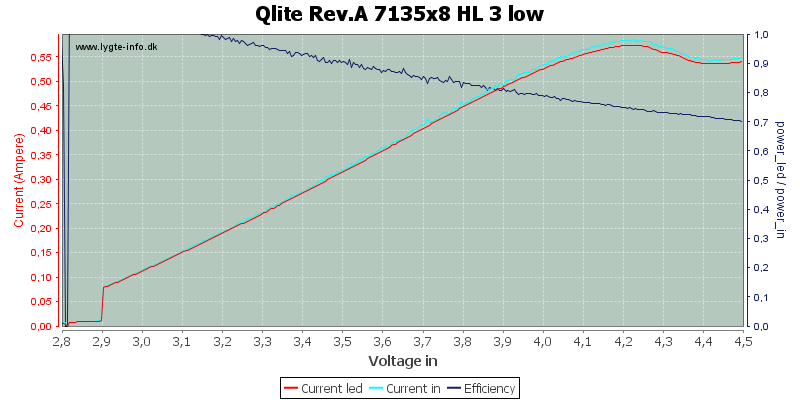
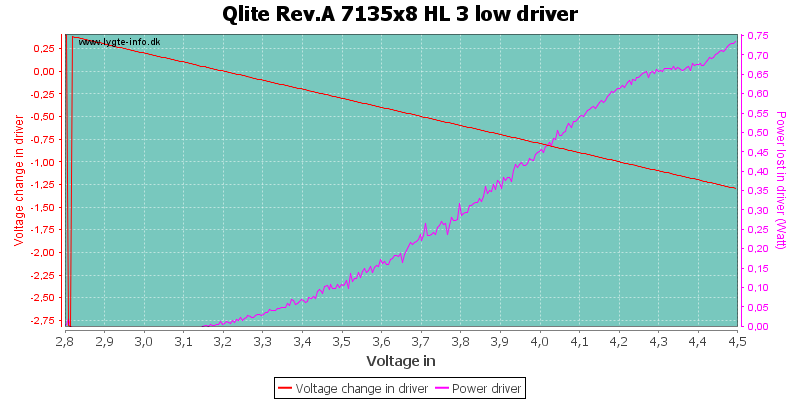
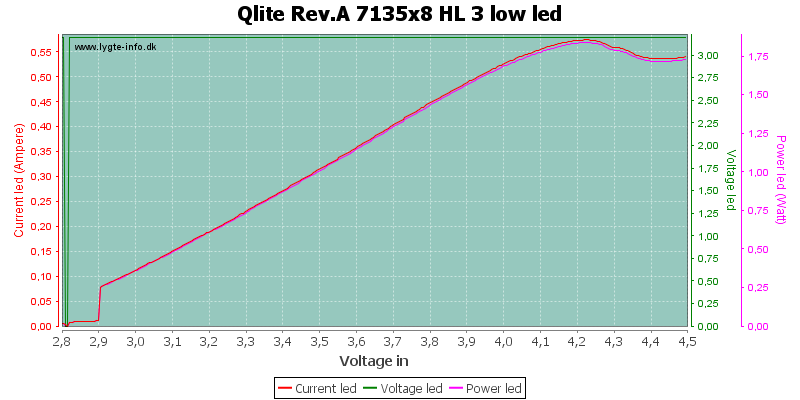
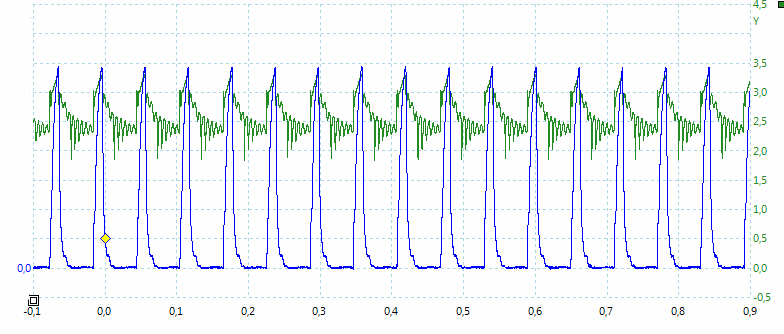
High 4st star
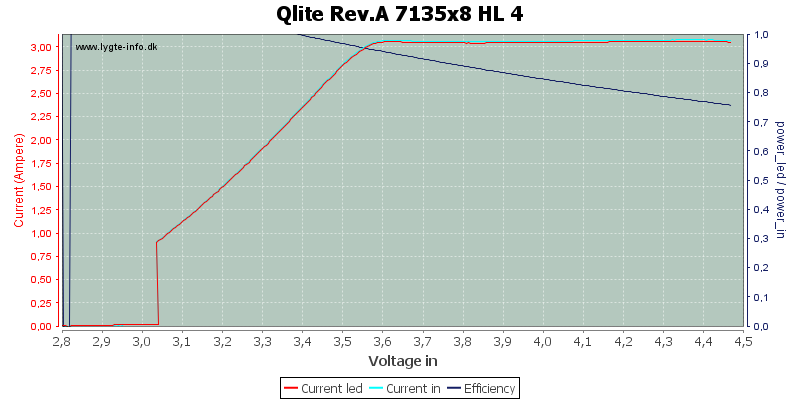
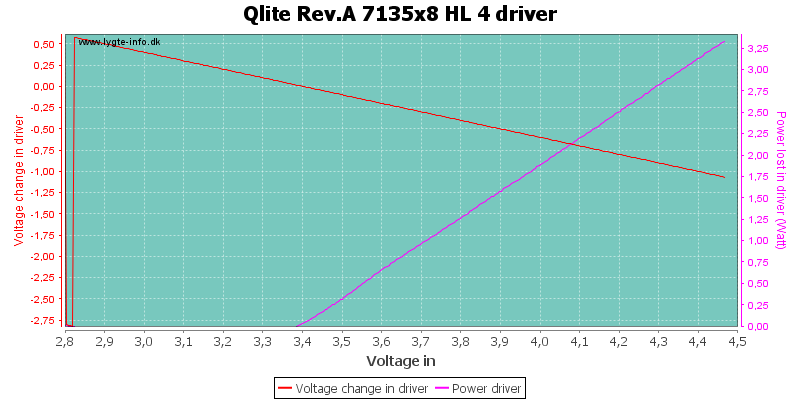
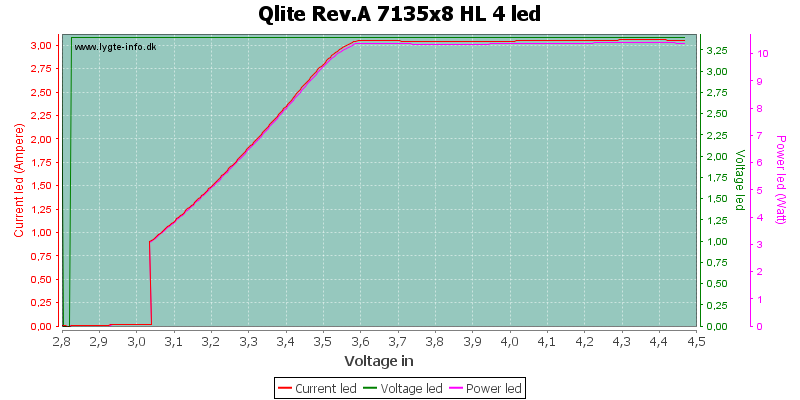

Medium 4st star
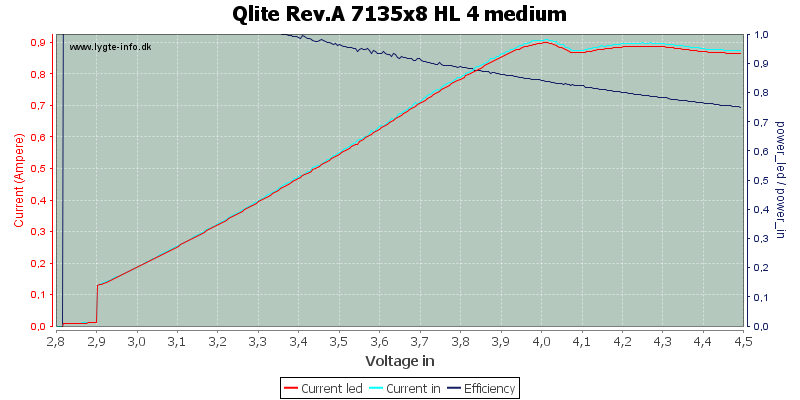
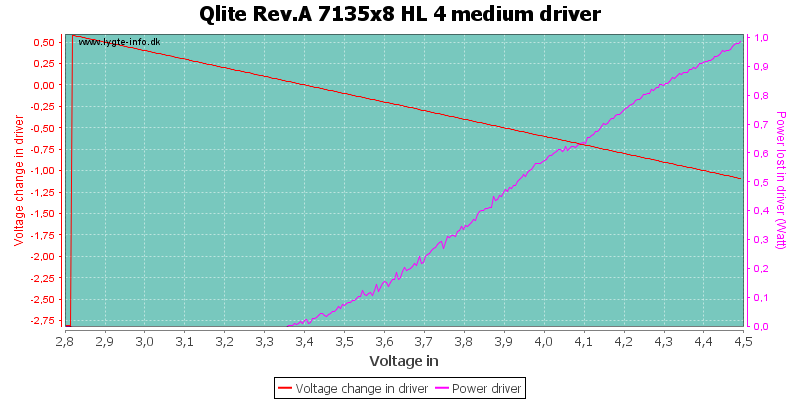

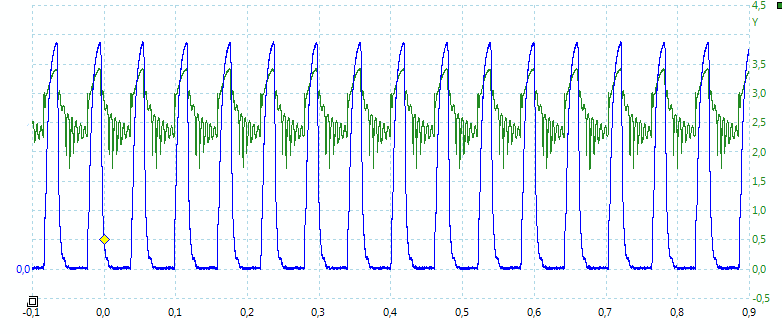
Low 4st star
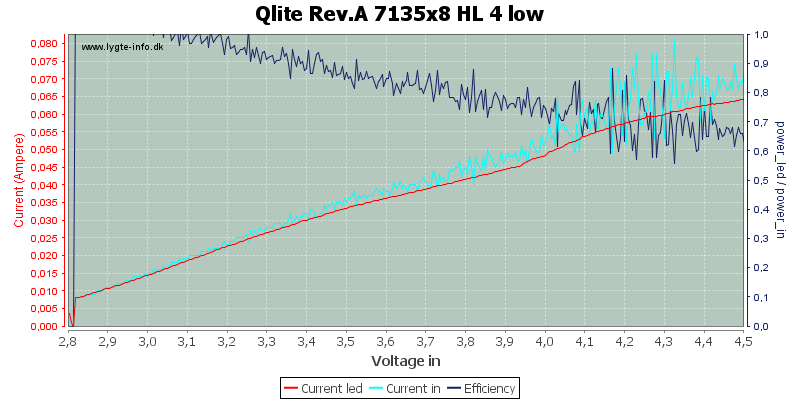
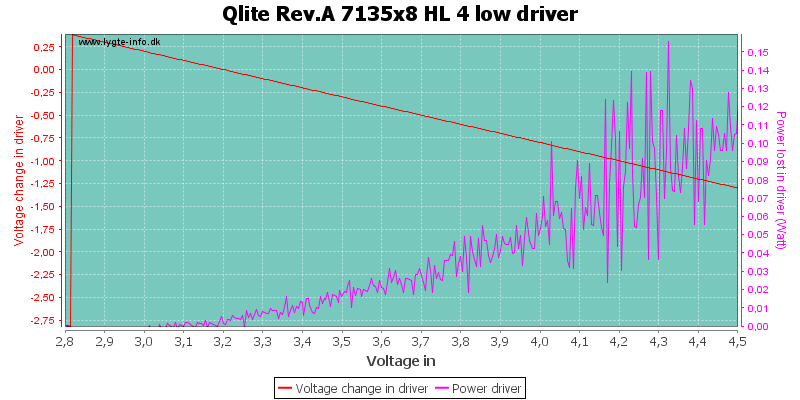
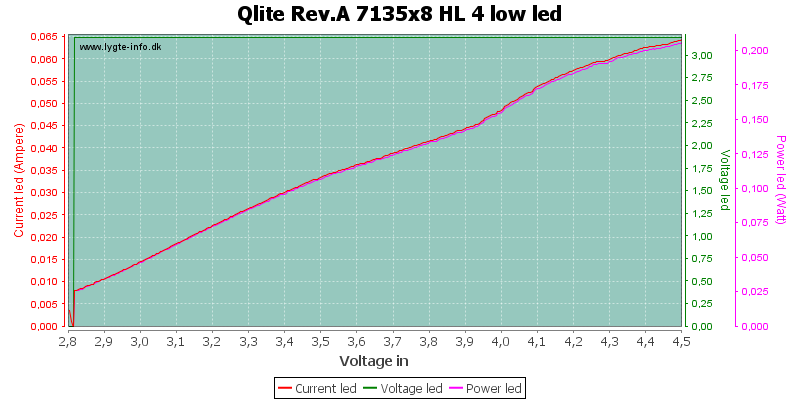

Moonlight 4st star
In this mode the current consumption is too low for my "input current" range. As can be seen on the curve it has a resolution of 1mA.
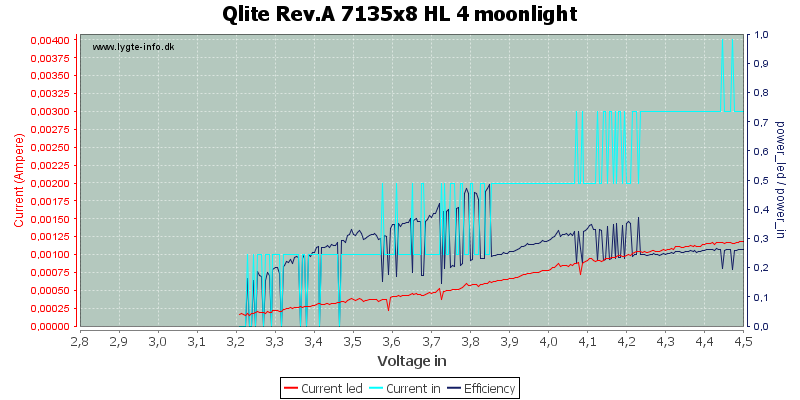
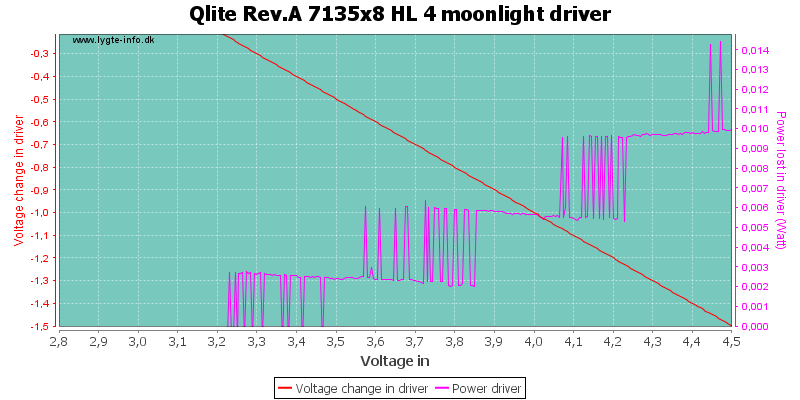
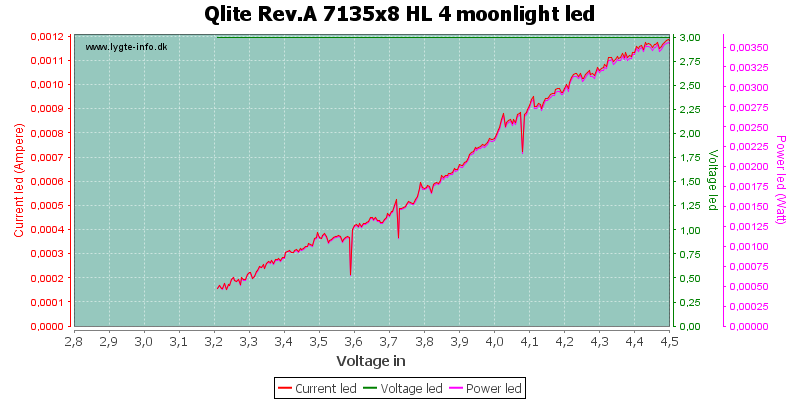
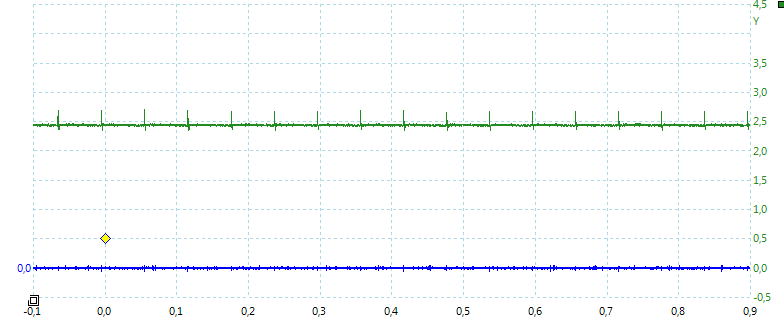
The moonlight mode is simply the pwm at it minimum setting.
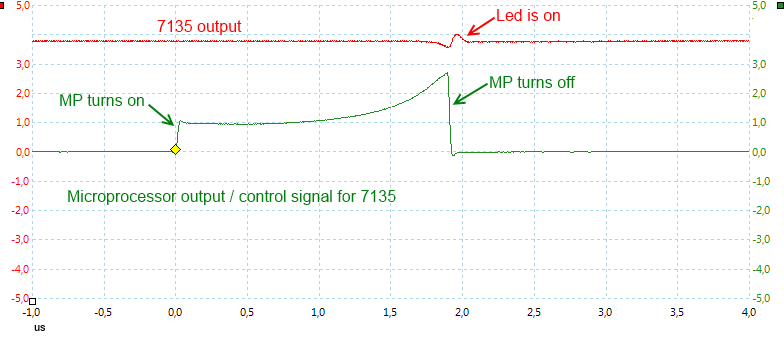
Here i have zoomed in on the signals. The MP (microprocessor) gives a two micro second pulse out, but the 7135 is about 2 us (micro seconds) to turn on. This will give a very short pulse to the led and is also very sensitive to tolerances in the driver.
I.e. a 7135 needing 1.8 us to turn on will work perfectly, but one needing 2.0 us will not show any light. The slow turn on looks like it may be because the output from the MP cannot supply enough current for a fast turn on.
Conclusion
Due to the linear regulation in this driver it does only work in a limited voltage range. It is simple construction, that is easy to modify like adding more 7135 (increase led current) or remove some 7135 chips (Decrease led current).
The tested version of this driver has a very high pwm frequency, this does increase the loss in the driver a little bit.
Notes
How do I test a led driver
List of all tested drivers






















































